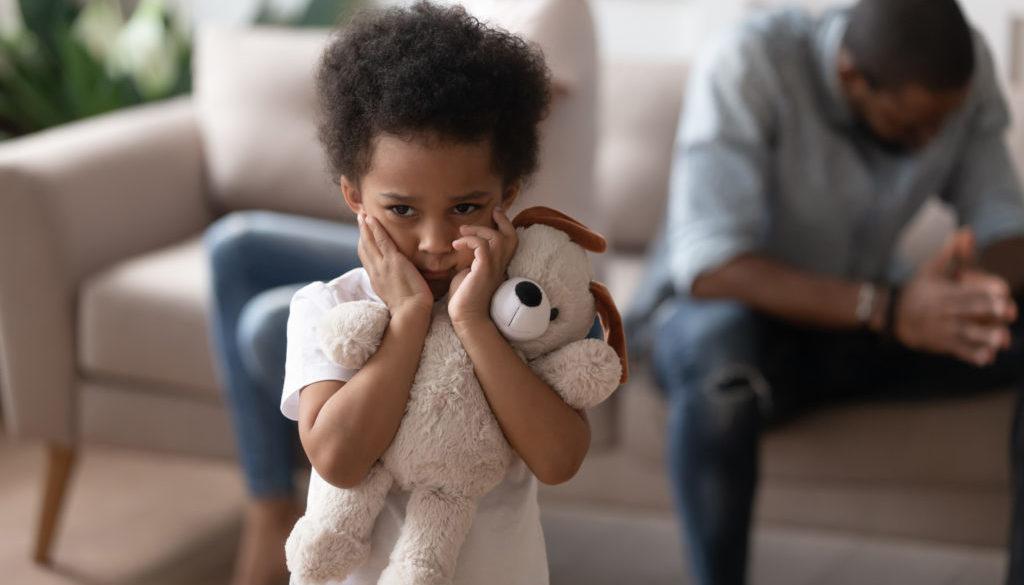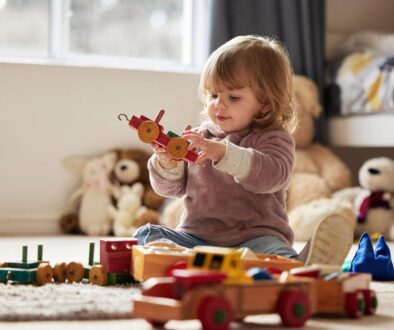“I’m Scared!” – Ways To Support Childhood Fears

From time to time, every child will experience fear. As young children explore the world around them, having new experiences and confronting new challenges, anxieties are almost an unavoidable part of growing up.
What children fear often depends on their age and level of development. Common fears by age include:
- Babies (age 0-2) may be afraid of strangers, unfamiliar settings, and loud noises.
- Toddlers (age 2-4) may express fears related to the dark, thunder (auditory fears), shadows, being separated from parents, changes to routine, or fears related to potty training (spatial fear of going down the toilet with the flush).
- Children (age 5-7) have developed more active imaginations. They are often scared of bad dreams, worried about disappointing parents/teachers, and getting sick or hurt. This is often when kids begin to worry about monsters in their closets or under their beds.
- Older children (age 7+) may begin to worry about things outside of their immediate circle. Things like a natural disaster or the current pandemic can cause worry that it will happen nearby or affect someone they love. They worry about loss of an important person or thing, can fear possible threats from real things like spiders, snakes, or a fall, and imagined threats from things such as monsters in their closet.
Every child’s fear is real to them – even if it seems silly or irrational to an adult. To best help your child to cope with, and overcome, these normal childhood fears, try using these four tools.
- Acknowledge their fear and validate their feelings. Do not make light of their fear. All feelings are real and valid – even if it doesn’t make logical sense – and that feeling needs to be addressed in order to work through it.
- Problem-solve together. Educate your child about what they are worried about, do some research together, and help to dispel any myths they may have.
- Commit to working together. Caregivers can model emotional regulation to help children remain calm and centered when faced with fear. Explain, expose, and explore – use books to tell stories about certain characters, animals, etc., or practice through pretend play.
- Practice just ‘being with’ and holding space for their fears. Offer quiet support by sitting with your child or teen during or after a challenging experience. Younger children may want a hug or need a transitional object for comfort, while teens may simply want you close – in case they want to talk.
There are many tools that can help address fear, anxiety, and worry in your little one. Consider your child’s age and development as you navigate which strategy to use. Don’t get discouraged if one way doesn’t work for your child. Try to keep in mind that different tactics work for different kids and at different points in their lives, so be open to more than one approach. Some common distraction techniques to try are:
- Deep breathing or belly breathing. Encourage your child to breathe in through their nose, visualize a cake with candles in front of them and exhale out through their mouth. Repeat as needed.
- Do a grounding activity. One popular exercise is the 5 senses grounding technique: Name five things you can see, four things you can touch, three things you can hear, two things you can smell and one thing you can taste. By activating all five of your child’s senses, they can often redirect away from whatever fear thought they started on and focus on the present.
- Small fidget toys like spinners and poppers keep fingers busy and force your child to focus their attention on the toy instead of their fear.
If you sense that your child is fearful of something, do not force them to face this fear in the moment. There are many small steps that you can take to reassure your child and help them to overcome these normal, and often fleeting, fears. Remember, childhood fears are a normal part of child development, and these fears will usually subside on their own.





